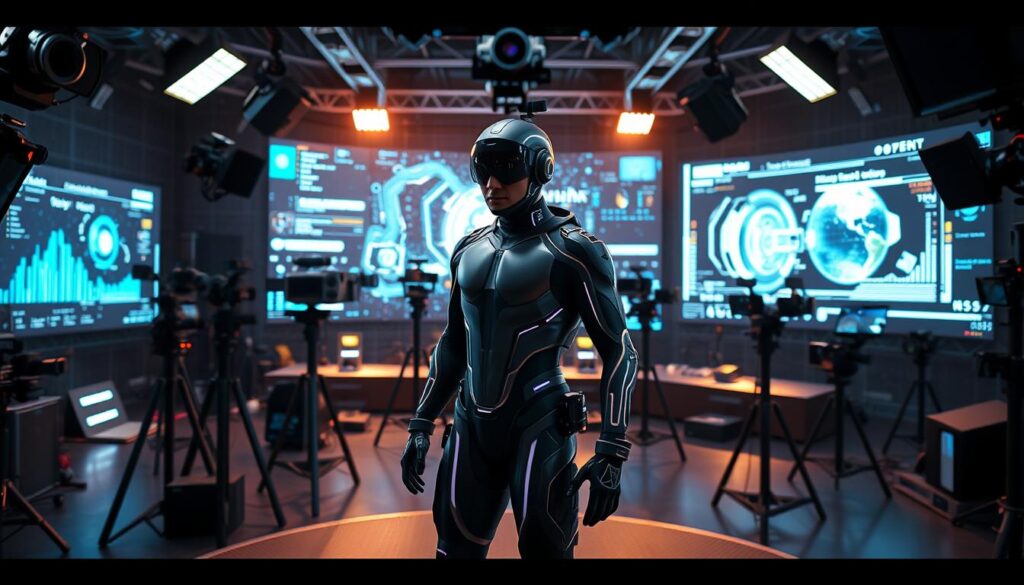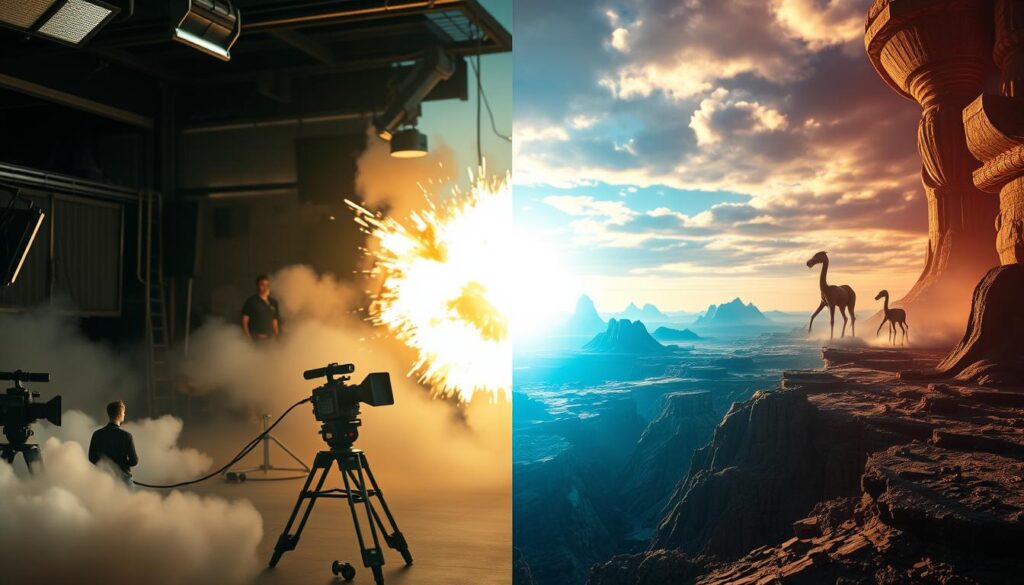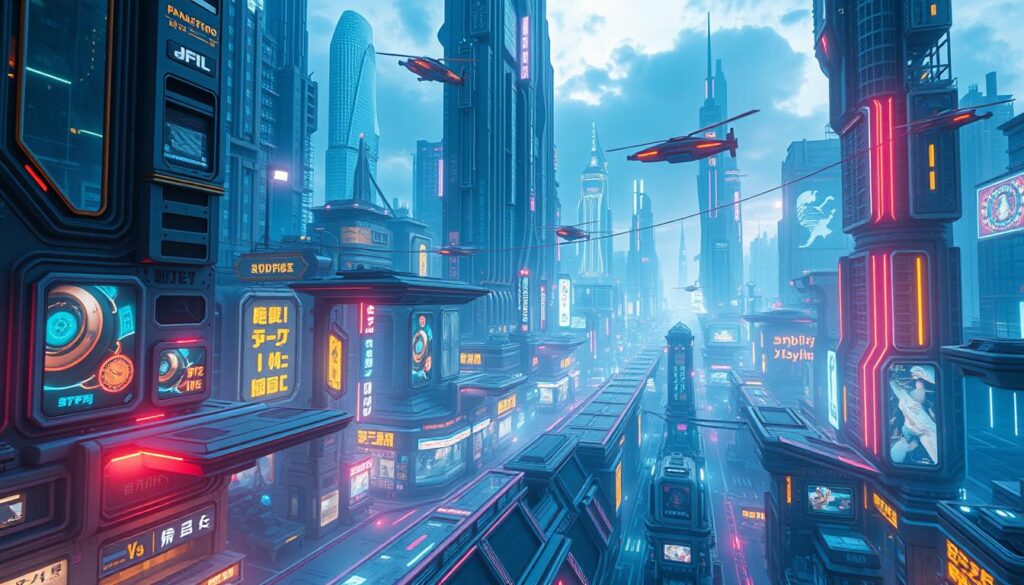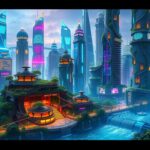Computer-generated imagery (CGI) has dramatically transformed the landscape of visual effects in film and television. By leveraging advanced digital artistry, filmmakers can craft immersive animations and breathtaking environments that enhance storytelling and captivate audiences. From the realistic creatures seen in blockbusters to the vibrant surrealism of animated features, CGI encompasses a vast array of technologies that have redefined what’s possible in modern cinema. This introduction will delve into the significance of CGI and set the foundation for a comprehensive exploration of its many facets.
Key Takeaways
- CGI plays a crucial role in modern visual effects.
- Advancements in digital artistry continue to enhance storytelling.
- CGI enables the creation of realistic animations and environments.
- The impact of CGI is evident across various film genres.
- Understanding CGI is essential for appreciating its role in cinema.
The Evolution of Visual Effects in Film and TV
The evolution of visual effects has dramatically reshaped the landscape of film and television. Throughout the decades, filmmakers have incorporated various techniques to create stunning visuals that captivate audiences. Initially, practical effects like puppetry, miniatures, and matte paintings dominated the scene. These methods laid the groundwork for the future of visual storytelling.
The introduction of CGI marked a significant milestone in CGI history, with groundbreaking films in the late 20th century setting the stage for what was to come. “Star Wars,” released in 1977, showcased the use of digital technology to create innovative visual effects that transformed the industry. This film not only captured the imagination of viewers but also inspired filmmakers to explore the possibilities of CGI further.
As technology progressed, the integration of digital techniques became more refined, allowing for unparalleled creativity within the realm of visual effects. From the impressive dinosaurs in “Jurassic Park” to the expansive world-building in “The Lord of the Rings,” CGI has continued to evolve, providing filmmakers with tools that enable realistic portrayals of unimaginable concepts.
Today, the evolution of visual effects embraces both traditional and digital methods. With a blend of CGI and practical effects, contemporary films often achieve a level of immersion that engages viewers in unique ways. The ongoing dialogue between these techniques signals a promising future in which filmmakers can push the envelope of visual storytelling.
Understanding Computer-Generated Imagery
Computer-generated imagery plays a crucial role in modern visual storytelling. As technology advances, the demand for high-quality visual effects has led to the exploration and implementation of CGI across various media. This section elaborates on the CGI definition and its historical journey, highlighting significant milestones in its development.
Defining Computer-Generated Imagery
Computer-generated imagery refers to visual content created using computer software and algorithms. This technique allows artists and developers to generate images ranging from simple graphics to highly detailed and realistic visuals. Unlike traditional special effects, which often rely on physical props and practical techniques, computer-generated imagery offers unlimited possibilities for creativity. With flexibility in design and greater control over the final output, CGI has become integral to films, television, and gaming.
The History of CGI Development
The history of CGI is marked by continuous innovation, beginning in the 1960s when pioneers like Ivan Sutherland started creating simple graphical images. In the 1980s, landmark projects, such as “Tron,” showcased the potential of CGI in mainstream cinema, captivating audiences with its groundbreaking visual effects. The release of “Jurassic Park” in 1993 set new standards for realism in computer-generated imagery, using advanced techniques to create lifelike dinosaurs. This decade saw an explosion of creativity and technical advancements that solidified CGI’s place in the film industry.
The Role of 3D Modeling in CGI
3D modeling serves as the backbone of computer-generated imagery, providing the essential elements needed for realistic visuals in film and television. Various CGI modeling techniques are employed to create intricate and compelling 3D assets. Mastering these foundational techniques enables artists to bring their creative visions to life, influencing how audiences connect with narratives.
Basics of 3D Modeling Techniques
Understanding the core principles of 3D modeling is crucial for artists looking to excel in CGI. Several effective techniques exist, including:
- Polygon Modeling: This widely used method involves manipulating a mesh of interconnected polygons to create complex shapes.
- Spline Modeling: This technique uses curves to outline the shape of objects, allowing for smooth, flowing forms.
- Sculpting: This method resembles traditional sculpting, where artists digitally manipulate a model like clay, enabling detailed and organic designs.
Popular 3D Modeling Software
Several software tools dominate the 3D modeling landscape, each offering unique features tailored to different needs. The following table highlights some of the most popular choices used in the industry and their distinguishing characteristics:
| Software | Features | Best For |
|---|---|---|
| Autodesk Maya | Comprehensive modeling tools, animation, and visual effects capabilities | Professional film and animation studios |
| Blender | Open-source, versatile modeling and animation tools | Independent artists and small studios |
| Cinema 4D | User-friendly interface, excellent for motion graphics | Motion graphic designers and visual effects artists |
Breaking Down the Animation Process
The animation process is a complex journey that takes a concept from initial ideas to fully realized CGI animation. This journey can be divided into three major stages: pre-production, production, and post-production. In the pre-production phase, storyboarding and scripting shape the narrative, while character design and environment creation set the visual tone.
During the production stage, animators utilize various techniques such as keyframing and rigging to create movement. Keyframing involves setting pivotal positions for a character or object, while rigging lays the foundation for how these models will move. The addition of in-betweening helps smooth transitions between keyframes, refining the flowing realism of the animation.
The final phase, post-production, focuses on bringing everything together. This stage includes the integration of sound, visual effects, and additional CGI animation elements, elevating the overall quality and emotional impact of the animation.
| Stage | Description | Key Techniques |
|---|---|---|
| Pre-Production | Planning and design of characters, environments, and story. | Storyboarding, Concept Art |
| Production | Actual creation of animations utilizing 3D models. | Keyframing, Rigging, In-betweening |
| Post-Production | Finalization of the animation with sound and effects. | Compositing, Sound Design |
Rendering: The Finishing Touch of CGI
The rendering process plays an essential role in the realm of computer-generated imagery (CGI), transforming intricate 3D models and animations into stunning visuals. Rendering is the bridge connecting the digital creation to its final output in high-quality images or video sequences. Various rendering techniques come into play during this phase, influencing the aesthetics and performance of CGI.
What is Rendering in CGI?
Rendering in CGI refers to the process of converting 3D models, textures, and lighting into a two-dimensional image or animation. This complex operation involves numerous calculations and algorithms that simulate how light interacts with objects, ensuring the final visuals are as impactful as the initial designs. The quality of the output depends significantly on the rendering techniques employed.
Types of Rendering Techniques
Several rendering methods exist, each tailored to specific needs within the CG industry. Understanding these rendering techniques can aid in selecting the most appropriate one for a project:
| Rendering Technique | Description | Advantages | Disadvantages |
|---|---|---|---|
| Real-Time Rendering | Used primarily in video games and interactive media, producing visuals quickly. | Immediate feedback, high interactivity. | Lower image quality compared to offline techniques. |
| Ray Tracing | Simulates the way light rays travel and interact with surfaces for highly realistic images. | Superior visual fidelity, accurate reflections, and shadows. | Slower processing time, resource-intensive. |
| Scanline Rendering | Draws images one horizontal line at a time, effective for simpler scenes. | Speedy rendering times, good for non-complex scenes. | Limited realism, struggles with complex lighting effects. |
Understanding the rendering process is crucial for achieving the desired quality in CGI projects. Each method has distinct characteristics that can significantly affect the final product.
Advancements in Motion Capture Technology
Motion capture technology has transformed the landscape of visual storytelling in film and gaming. This innovative process captures the movements of actors and translates them into digital characters, enhancing realism and emotional depth. Understanding how this technology works provides insight into its significance in contemporary CGI.
How Motion Capture Works
The motion capture process involves recording movements with various sensors and cameras, which track the actor’s gestures and facial expressions. The collected data gets processed through advanced computer algorithms, converting physical actions into digital animations. This technology creates lifelike representations of characters, making them more relatable to audiences.
Notable films showcasing the power of motion capture technology include “Avatar,” where James Cameron utilized this approach to bring alien characters to life. Another example is “The Lord of the Rings” series, where Gollum’s performance was captured through motion sensors, resulting in a character that resonated deeply with viewers.

Compositing in Visual Effects
Compositing plays a critical role in visual effects, blending various elements to create a cohesive image or scene. This process is essential for enhancing storytelling by seamlessly integrating live-action footage with CGI. Visual effects compositing combines creative and technical skills, resulting in visually compelling narratives. Proper compositing techniques ensure that all components interact naturally, making the final product believable to the audience.
The Importance of Compositing in Film
In modern filmmaking, the importance of compositing cannot be overstated. It allows directors to create immersive worlds by combining different visual elements into a single scene. Without compositing, fantastical environments or powerful effects seen in blockbuster movies would not achieve their intended impact. Viewers are drawn into stories when visual effects compositing is executed flawlessly, enhancing emotional engagement and narrative depth.
Popular Compositing Software Tools
Numerous compositing software tools have become industry standards for visual effects professionals. Among the most prominent are:
- Adobe After Effects: Widely used for creating animations and motion graphics, After Effects supports various visual effects compositing tasks and is known for its user-friendly interface.
- Nuke: A powerful node-based compositing tool employed in high-end film production, Nuke excels in integrating CGI and live-action footage seamlessly.
- Fusion: Developed by Blackmagic Design, Fusion provides advanced compositing capabilities, frequently used in professional film and television environments.
These tools are crucial to post-production workflows. They enable artists to manipulate elements with precision, resulting in visually stunning outcomes that elevate the quality of visual storytelling.
The Impact of CGI on Storytelling in Film
CGI storytelling has fundamentally transformed the way narratives are crafted and experienced in film and television. With the ability to create visually stunning and immersive worlds, CGI allows filmmakers to bring to life complex ideas and fantastical scenarios that were previously confined to the imagination.
The CGI impact on storytelling is evident in several ways:
- Enhanced Visuals: Filmmakers can render extraordinary landscapes and characters, captivating audiences and drawing them into the narrative.
- Expanded Creative Possibilities: New techniques give directors and writers the freedom to explore themes and plots that push the boundaries of traditional storytelling.
- Emotional Engagement: CGI characters can evoke deep emotional responses from viewers, forging connections that heighten the overall cinematic experience.
In many modern films, CGI storytelling serves not just as a supplement but as an integral component of the narrative. Productions like “Avatar” or “The Lord of the Rings” showcase how CGI can enhance character development and plot progression by making the impossible appear real.
Ultimately, the combination of imaginative storytelling with advanced CGI technology continues to redefine how stories are told, making the medium richer and more compelling for the audience.
Special Effects vs. Visual Effects
The world of filmmaking utilizes various techniques to create stunning imagery and transport audiences to different realms. Among these techniques, special effects and visual effects stand out. While they often complement each other in storytelling, they serve distinctive purposes in the production process. Understanding these differences enhances one’s appreciation for the magic behind the screen.
Understanding the Difference
Special effects refer to practical effects created on set, often involving physical elements. Examples of special effects include explosions, animatronics, and prosthetic makeup. These effects allow filmmakers to achieve realistic results during filming, providing tangible elements for actors to interact with directly.
In contrast, visual effects are digitally created or enhanced in post-production. This process often involves the integration of computer-generated imagery (CGI) with the live-action footage. For example, creating fantastical creatures or intricate backgrounds that would be impossible or impractical to achieve on set falls under the category of visual effects.
Both types of effects have their advantages and limitations:
| Effect Type | Advantages | Limitations |
|---|---|---|
| Special Effects | Realistic interactions, immediate feedback on set | Costly and time-consuming, limited by physical space |
| Visual Effects | Creative flexibility, can depict impossible scenarios | Requires extensive post-production, risk of appearing unrealistic |
Each effect type plays a pivotal role in storytelling, contributing to immersive experiences that resonate with viewers.

The Future of Digital Artistry in Film & TV
The landscape of visual storytelling continues to evolve, with technological advancements shaping the future of CGI. As audiences crave more immersive experiences, several emerging trends point towards an exciting direction for CGI technology. Innovations in virtual reality (VR), augmented reality (AR), and artificial intelligence (AI) are set to redefine the cinematic experience.
Emerging Trends in CGI Technology
Current CGI trends highlight a shift towards interactivity and unparalleled realism. Here are some noteworthy developments:
- Virtual Reality: VR allows viewers to step inside the story, creating a unique connection to characters and settings.
- Augmented Reality: AR enhances the real world by overlaying digital elements, providing enhanced storytelling possibilities.
- Artificial Intelligence: AI is being used for dynamic content creation, enabling more personalized viewing experiences.
Predictions for the Future of CGI
Looking ahead, predictions for the future of CGI suggest a continual push towards hyper-realistic visuals and interactive films that draw viewers deeper into narratives. Key forecasts include:
- Development of lifelike character animations that adapt to user interactions.
- Integration of AI to automate many aspects of CGI production, speeding up workflows.
- Expansion of audience engagement through interactive CGI-driven experiences.
The convergence of these technologies will shape the future of CGI, allowing creators to become more innovative in how stories are told. As the film and television industries embrace these advancements, the multimedia experience becomes richer and more engaging, paving the way for the next generation of digital artistry in the realm of visual effects.
Challenges and Considerations in CGI Production
Producing high-quality CGI involves navigating a landscape filled with various challenges in CGI. Key issues often arise during the production process, significantly impacting the final output. Budget constraints remain a formidable obstacle, compelling production teams to make tough decisions on resources and scope.
Time limitations contribute to the complexity of CGI projects. Tight deadlines can lead to rushed work, ultimately compromising the visual quality and coherence of CGI elements. Additionally, securing skilled talent poses another significant hurdle. The demand for talented CGI artists typically exceeds the available workforce, making it challenging to staff projects adequately.
Maintaining clear communication within teams is crucial to overcome these challenges. Effective collaboration ensures that everyone understands their roles and responsibilities, which helps mitigate potential issues during production. The following table outlines some common challenges in CGI and associated production considerations:
| Challenge | Description | Production Consideration |
|---|---|---|
| Budget Constraints | Limited financial resources can restrict the scope of a CGI project. | Prioritize key visual effects that are essential to the story. |
| Time Limitations | Rushing work can result in lower quality CGI effects. | Implement effective project management tools to streamline workflows. |
| Skilled Talent Availability | High demand for professional CGI artists exceeds the supply. | Invest in training and development programs for existing staff. |
| Team Communication | Poor communication can lead to misunderstandings and errors. | Utilize collaborative software to keep all team members informed. |
Understanding these challenges in CGI and addressing the associated production considerations enhances the likelihood of delivering visually stunning and engaging content in film and television.
CGI Software: Tools of the Trade
The world of CGI production relies heavily on a diverse array of software tools that enable artists and studios to bring their visions to life. Selecting the right CGI software tools can greatly influence the efficiency and quality of a project. Understanding the various options available in industry software is crucial for achieving the desired outcome.
Leading CGI Software in the Industry
Several notable software options stand out in the domain of CGI. Each tool serves specific purposes, catering to different aspects of the production pipeline. Popular choices include:
- Autodesk 3ds Max – A comprehensive 3D modeling, animation, and rendering tool widely used for game development and film.
- Houdini – Renowned for its advanced simulation capabilities and procedural workflow, ideal for creating complex visual effects.
- Substance Painter – Focused on texturing, this software is key for creating highly detailed surfaces and materials.
Choosing the Right Tools for CGI Projects
When it comes to choosing CGI software tools, it is vital for artists and studios to consider several key factors:
- Project Requirements – Analyze the specific needs of the CGI project. Different genres and styles may demand particular software capabilities.
- Team Skills – Evaluate the existing skills of the team to ensure they can effectively utilize the selected industry software.
- Budget Constraints – Assess the budget available for software procurement. Some tools may offer free versions or student licenses.
By taking these considerations into account, teams can better select the most effective CGI software tools for their projects.
Case Studies: CGI Icons in Film & TV
CGI case studies illustrate the profound impact of computer-generated imagery on the film and television industries. Several iconic CGI projects have set benchmarks for creativity and technological innovation, enhancing storytelling and audience engagement.
The movie Avatar, directed by James Cameron, stands as a prime example. Its groundbreaking use of motion capture technology allowed the creation of realistic alien worlds and characters. This film not only demonstrated the potential of CGI but also pushed the boundaries of visual effects, earning multiple awards and accolades.
Another remarkable instance can be found in the series Game of Thrones, particularly in the portrayal of dragons. The integration of CGI with practical effects captivated audiences and showcased how digital artistry could accurately depict fantastical elements. This innovative approach breathed life into the series, becoming a signature hallmark recognized across the globe.
The film Jurassic Park played a crucial role in revolutionizing CGI. Its lifelike dinosaurs set new industry standards, demonstrating how CGI could seamlessly blend with live-action footage. This project influenced countless filmmakers and solidified CGI as an essential component in visual storytelling.
An analysis of these iconic CGI projects illustrates how technological advancements continue to shape the industry. As CGI case studies reveal, these successful applications not only transform narratives but also redefine audience perceptions, paving the way for future innovations in film and TV. Insights drawn from these examples foster appreciation for the artistry and expertise involved in CGI production.
Conclusion
The impact of computer-generated imagery (CGI) on the film and television industry has been monumental, marking a definitive shift in how stories are told and visual art is created. As we reflect on this conclusion on CGI, it is clear that its transformative power has redefined audience engagement, allowing filmmakers to craft intricate worlds that were once confined to imagination. CGI has opened up endless possibilities, driving creativity that captivates viewers and enhances narrative depth.
Moreover, the evolution of CGI technology continues to reshape visual artistry, pushing the boundaries of what can be achieved on screen. From the breathtaking landscapes of “Avatar” to the lifelike characters in “The Mandalorian,” the ongoing advancement of CGI stands as a testament to its importance in future media. This summary of CGI impact not only emphasizes its current role but also raises anticipation for the innovative developments that lie ahead.
As new techniques and tools emerge, the integration of CGI into storytelling frameworks will undoubtedly expand, offering filmmakers innovative avenues to explore complex themes and emotions. In conclusion, we stand at the threshold of a new era in filmmaking, where CGI plays an indispensable role in narrating compelling stories and enchanting audiences worldwide.



